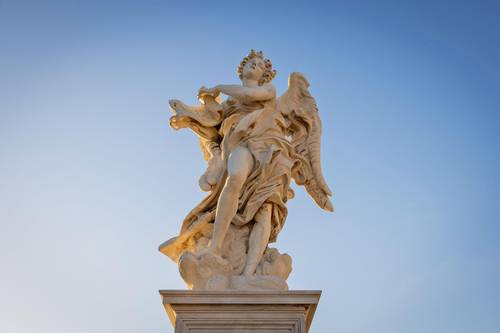Rome. During the construction of the new Pia Pia in Rome, which cost 87.6 million dollars, remains from the ancient Roman period were discovered that will be transferred to Castel Sant’Angelo; among them, a laundry that used urine as detergent, located near the Tiber to ensure a constant supply of water. These facilities, generally outdoors and in peripheral areas, were located to disperse unpleasant odors.
It is about the most important urban intervention of the Jubilee
. The work connects Rome with the Vatican on a pedestrian basis, linking Castel Sant’Angelo with St. Peter’s Square, through an underground passage that channels vehicular traffic. Construction was completed in a record time of 16 months, involving 110 workers operating in three shifts 24 hours a day.
The Italian capital is undergoing an urban transformation focused on developing a sustainable tourism model; In the process, it seeks to create alternative routes that better distribute the flow of millions of tourists, relying on the improvement of cultural and road infrastructure, the restoration of heritage, the digitalization of services and the revitalization of peripheral areas.
This is possible thanks to an unprecedented injection of funds, promoting its remarkable transformation into a city-museum. According to the latest report of the City Travel Report, In 2023, Rome was the European city with the highest tourism growth (45.2 percent), surpassing London and Vienna.
The main driver of this transformation has been the Jubilee of 2025, whose motto is Pilgrims of Hope. Its purpose is not only to welcome millions of pilgrims, but also to promote projects that improve the quality of life of citizens, both in the center and in the metropolitan area. This includes environmental sustainability initiatives, focused on the care of green and aquifer areas. The redevelopment focuses on public spaces, Jubilee areas and peripheral areas.
The Jubilee Plan, financed with national, regional and European funds, contemplates an investment of almost 5 billion dollars. It is coordinated by an extraordinary government commissioner, the mayor of Rome, Roberto Gualtieri, under the mandate of the presidency of the Council of Ministers. Until now, citizens have faced the inconvenience of a city in full transformation, with 423 approved projects, of which 390 belong to the Caput Mundi Program, of which 60 percent has already been completed.
The initiative covers parks, fountains, churches, cycle paths, hospitals, markets, archaeological sites, train stations, as well as improvements in squares, sidewalks and the creation of pedestrian paths, among others that can be found at this link: https://www .romasitrasforma.it/
Postcards of dust and noise
Recently, the city has been visually characterized by the presence of thousands of workers, technicians and experts, wrapped in clouds of dust, while the traffic emits constant horns and machinery and chisels resonate incessantly.
During the remodeling of Pia Square, a portal from the Julius-Claudian era was also discovered, which has made it possible to reconstruct previously unknown urban landscapes, occupied by suburban imperial residences overlooking the river, which included arcades, promenades and gardens. One of these complexes belonged to Caligula, as indicated by a water pipe with his name. These findings coincide with historical accounts of a meeting between that emperor and a Jewish delegation at this site. In addition, terracotta decorations with mythological scenes were found, which were used to cover the sewers.
At Castel Sant’Angelo, the 10 marble statues that adorn the Gian Lorenzo Bernini bridge, as well as the surrounding gardens, have been restored.
Saint John Lateran had great relevance during the Middle Ages, being the first papal see until 1305, when it was moved to Avignon, France. Excavations carried out to pave the square in front of the basilica revealed the remains of a tuff wall that protected the papal residence from the 9th century, a period in which Rome suffered Saracen raids and internal fights between aristocratic families who disputed control of the papacy. In addition, vestiges from previous times were found that enrich knowledge about the history of the area.
Rome’s artistic heritage includes its many fountains, dating from ancient Rome to the present day, with the baroque ones being the most impressive. Of the 55 fountains that are being restored, those located in the main tourist spots, such as the Tritons fountain, have already been completed; the one in Plaza De la Rotonda, in front of the Pantheon; the Bernini, in Piazza Navona (which had the missing finger of the Danube River rebuilt); the fountain in Piazza Farnesio, and, above all, the emblematic Trevi fountain. The latter was cleaned for three months and will have regulated access for the first time, allowing the entry of a maximum of 400 people at a time, from 9 a.m. to 9 p.m., except Mondays and Fridays, when it will be closed for maintenance. Sitting on the edge, eating, drinking, smoking or throwing coins is prohibited. Although the square will be open to the public, those who wish to approach the fountain using the installed scaffolding must pay a 2-euro ticket.
